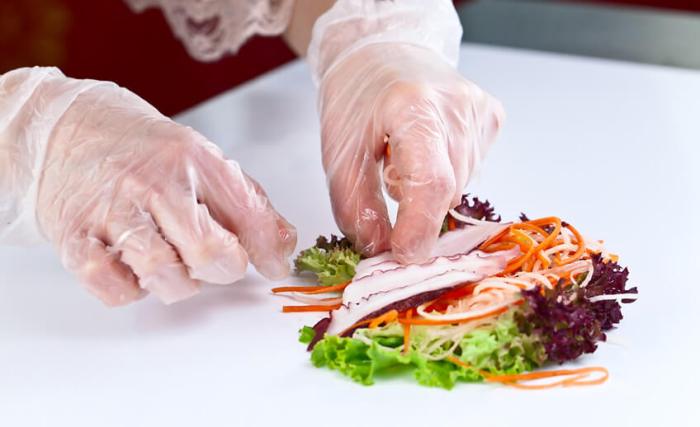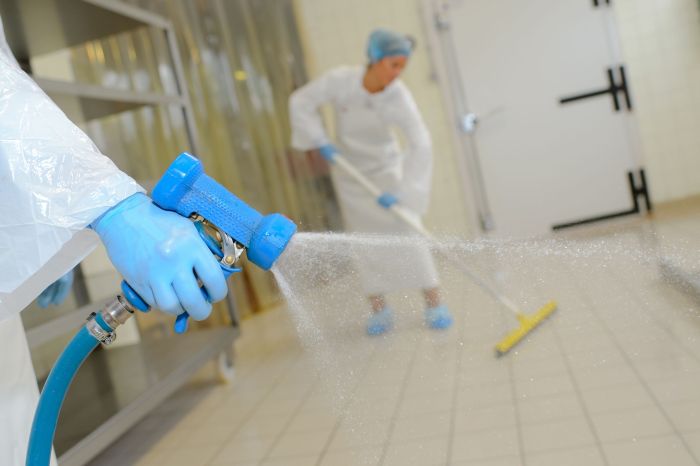Culinary crossword 1.1 sanitary food handling – Culinary Crossword 1.1: Sanitary Food Handling invites you on an educational journey into the realm of food safety. Delve into the intricacies of sanitary practices, personal hygiene, food storage and preparation techniques, cleaning and sanitizing procedures, food safety regulations, and training for food handlers.
Prepare to enhance your culinary knowledge and elevate your food handling skills to new heights.
Sanitary Food Handling Standards

Maintaining sanitary food handling practices is paramount to ensure the safety and quality of food products. Adhering to these standards minimizes the risk of foodborne illnesses, protects consumers’ health, and upholds the reputation of culinary establishments.
Essential sanitary food handling standards include:
- Proper handwashing techniques and frequency
- Clean and sanitized food contact surfaces
- Appropriate food storage temperatures
- Preventing cross-contamination
- HACCP (Hazard Analysis and Critical Control Points) implementation
Neglecting sanitary food handling measures can lead to severe consequences, including:
- Foodborne illnesses and outbreaks
- Damage to public health and reputation
- Legal and financial penalties
Personal Hygiene in Culinary Settings: Culinary Crossword 1.1 Sanitary Food Handling

Personal hygiene plays a crucial role in maintaining a sanitary culinary environment. Culinary professionals must adhere to strict hygiene practices to prevent the spread of microorganisms and ensure the safety of food products.
Guidelines for proper handwashing techniques include:
- Wash hands thoroughly with warm, soapy water for at least 20 seconds
- Use a nail brush to clean under fingernails
- Rinse hands thoroughly and dry them with a clean towel
Appropriate attire and accessories for culinary professionals include:
- Clean and pressed chef’s uniform
- Closed-toe, non-slip shoes
- Apron
- Hairnet or hat
Food Storage and Preparation Techniques
Proper food storage and preparation techniques are essential to minimize the risk of contamination and ensure food safety. Best practices for storing food include:
- Storing food at appropriate temperatures
- Using clean and sanitized containers
- Labeling and dating food items
- Proper inventory management
Proper food preparation techniques include:
- Thoroughly cooking food to eliminate pathogens
- Avoiding cross-contamination by using separate cutting boards and utensils for raw and cooked foods
- Maintaining proper temperature control throughout the preparation process
Temperature control plays a critical role in preventing foodborne illnesses. Food should be stored and prepared at temperatures that inhibit the growth of microorganisms.
Cleaning and Sanitizing Procedures
Regular cleaning and sanitizing of food preparation surfaces is essential to prevent the accumulation of bacteria and other microorganisms. The following table Artikels the steps involved in cleaning and sanitizing food preparation surfaces:
| Step | Procedure |
|---|---|
| 1 | Remove all food debris and visible soil from the surface |
| 2 | Wash the surface with hot, soapy water |
| 3 | Rinse the surface thoroughly with clean water |
| 4 | Apply a food-grade sanitizer to the surface and allow it to air dry |
Approved cleaning and sanitizing agents include:
- Bleach
- Quaternary ammonium compounds
- Iodine-based sanitizers
Regular cleaning and sanitizing should be performed at least once a day, or more frequently as needed.
Food Safety Regulations and Compliance

Food safety regulations are essential to protect public health and ensure the safety of food products. These regulations establish minimum standards for food handling, storage, and preparation.
Major food safety regulations include:
- Food and Drug Administration (FDA) Food Code
- USDA Food Safety and Inspection Service (FSIS) regulations
- European Food Safety Authority (EFSA) regulations
Compliance with food safety regulations is mandatory for all culinary establishments. Benefits of compliance include:
- Protecting consumers from foodborne illnesses
- Maintaining a positive reputation
- Avoiding legal penalties
Training and Education for Food Handlers
Ongoing training and education are essential for culinary professionals to maintain their knowledge of food safety practices. Food handler training programs should cover the following topics:
- Personal hygiene
- Sanitary food handling practices
- Foodborne illnesses
- Food safety regulations
- HACCP principles
Culinary professionals should attend food handler training programs regularly to ensure they are up-to-date on the latest food safety practices.
Certification programs can demonstrate food safety knowledge and commitment to maintaining a safe culinary environment.
Questions and Answers
What is the significance of sanitary food handling practices?
Sanitary food handling practices are crucial for preventing foodborne illnesses and ensuring the safety of consumers.
What are the essential sanitary food handling standards?
Essential sanitary food handling standards include maintaining personal hygiene, properly storing and preparing food, and following cleaning and sanitizing procedures.
What are the consequences of neglecting sanitary food handling measures?
Neglecting sanitary food handling measures can lead to foodborne illnesses, damage to reputation, and legal consequences.